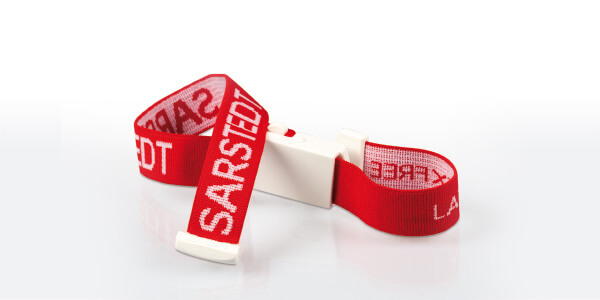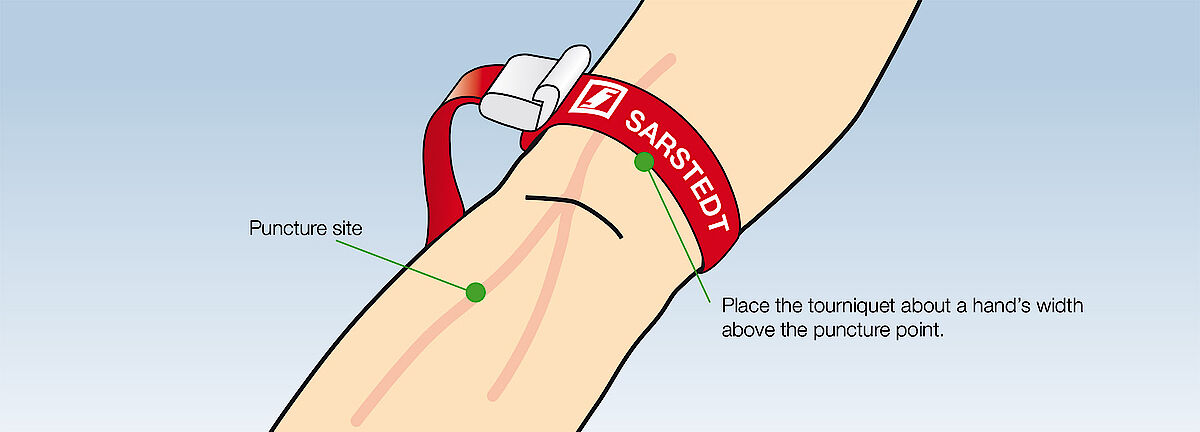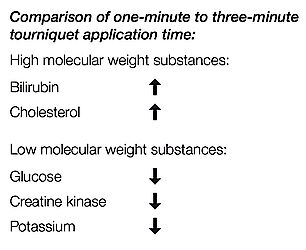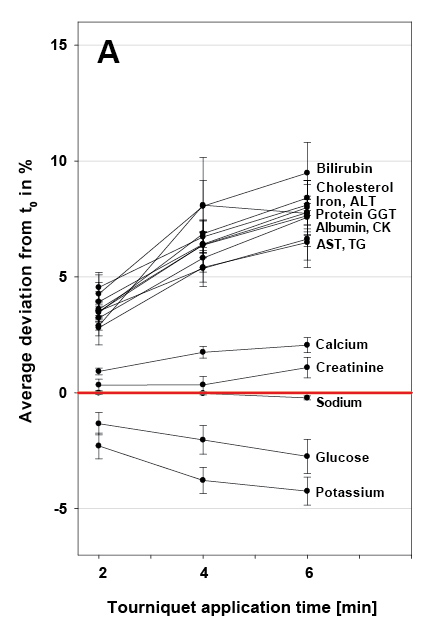
Small outlay, big impact
All of the following are required for blood collection:
safety needles, safety multifly® needles, multi adapters or BKF adapters, blood collection tubes and tourniquets.
But what purpose does the tourniquet serve?
• Does it make it easier to puncture the vein?
• Does it speed up blood collection?
• What should be taken into account when using the tourniquet?
Find out more below.
Do I even need to use a tourniquet when collecting blood?
If the veins are clearly visible, it is not strictly necessary to use a tourniquet. But the veins in the crook of the arm are often rather difficult to see. By using a tourniquet, veins become easier to see and punctures can therefore be carried out more reliably.
How exactly do I apply a tourniquet?
Place the tourniquet about a hand’s width above the desired puncture point. It must still be possible to feel the pulse so that circulation to the arm continues. Ideally, dynamic pressure should be 10 mm Hg below the diastolic pressure.
Recommendation:
The tourniquet should be tightened away from the patient.

When should I loosen the tourniquet?
Once the vein has been punctured and blood starts flowing into the collection tube, the tourniquet should be loosened.
The tourniquet should not be applied for periods exceeding one minute. If the tourniquet has already been applied for a longer period prior to blood collection, loosen it for approx. one minute and then re-tighte.
Why should it not be applied for longer than one minute?
Almost all measured values change after the tourniquet has been applied for a minute. Measurement results can be incorrectly high or incorrectly low.
Why does applying a tourniquet change the measured values?
Applying a tourniquet temporarily changes the colloid osmotic pressure. This means that the increase in filtration pressure on the capillaries causes water and low molecular weight substances to shift from the extracellular space into the intercellular space.
Substances with a high molecular weight cannot penetrate the capillary wall which is why an increase in concentration in the blood is observed here. Conversely, the concentration of low molecular weight substances decreases.

The initial measured values begin to change after the tourniquet has been applied for one minute. This has significant consequences, particularly for values with a small reference range.


